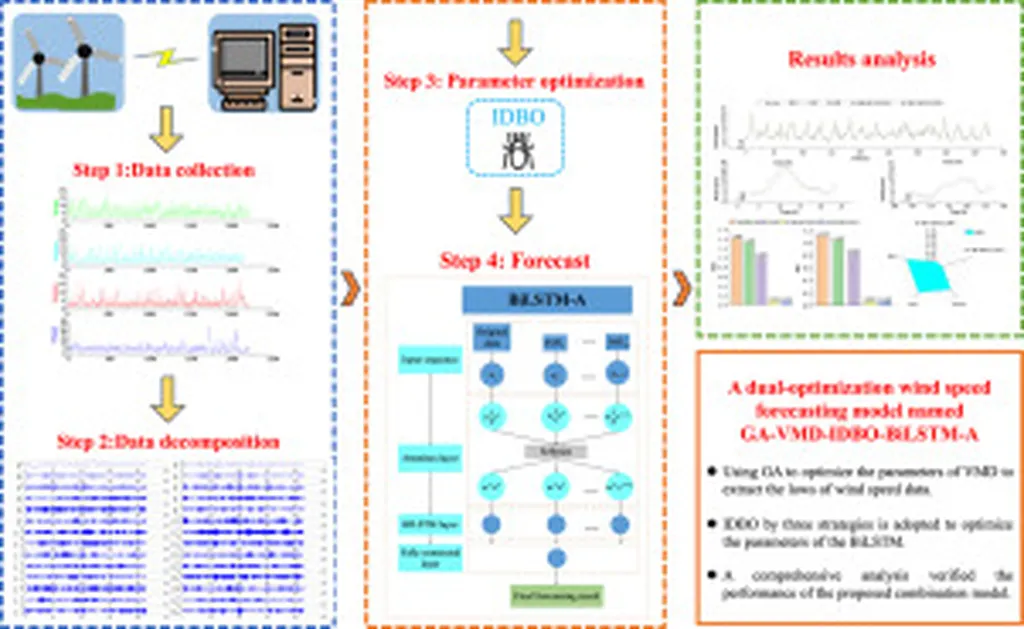In the quest to harness the full potential of wind energy, researchers have long grappled with the challenge of smoothing out its inherent fluctuations. A groundbreaking study published in the Chinese Society for Electrical Engineering Journal of Power and Energy Systems, offers a novel solution that could revolutionize the way we manage battery energy storage systems (BESS) and enhance the overall efficiency of wind power integration.
At the heart of this innovation is a dynamic grouping control strategy developed by Yang Yu, a researcher at North China Electric Power University, and his team. Their approach aims to extend the remaining useful life (RUL) of BESS and improve overall energy efficiency (OEE) while effectively smoothing wind power fluctuations.
The strategy involves a multi-layered process that begins with obtaining grid-connected power signals. “The key is to optimize the capacity allocation for different battery groups within the BESS,” explains Yang Yu. “We’ve developed a model that considers both life loss and overall energy efficiency, and we use an improved beetle swarm antennae search algorithm to solve it.”
The algorithm, inspired by the natural behavior of beetles, helps in dynamically adjusting the grouping state of battery units during operation. This ensures that the battery units maintain good sustainable dispatchability, a critical factor for long-term performance.
One of the standout features of this strategy is the double-layer power allocation approach. The upper layer handles power allocation from the BESS into three distinct battery groups, while the lower layer manages power allocation within each group, considering the power conversion system (PCS) efficiency under different working conditions. This dual-layer approach not only reduces life loss but also improves overall energy efficiency and ensures consistency in the state of charge for battery units.
To make the strategy even more practical, the researchers built an RUL evaluation model based on the swing door trend algorithm. This model significantly shortens the required calculation time, making it feasible for real-world applications.
The implications of this research are vast. For the energy sector, this means more efficient and longer-lasting battery storage solutions, which are crucial for integrating renewable energy sources like wind power into the grid. “Our strategy not only extends the life of battery storage systems but also enhances their overall energy efficiency,” says Yang Yu. “This could lead to significant cost savings and improved performance for energy providers.”
The simulation results are promising, showing that the proposed strategy achieves the longest RUL and highest OEE while effectively smoothing wind power fluctuations. This validates the correctness and validity of the approach, paving the way for future developments in the field.
As the energy sector continues to evolve, innovations like this dynamic grouping control strategy will play a pivotal role in shaping a more sustainable and efficient future. With the increasing demand for renewable energy, the ability to manage and optimize battery storage systems will be more important than ever. This research, published in the Chinese Society for Electrical Engineering Journal of Power and Energy Systems, marks a significant step forward in that direction.

